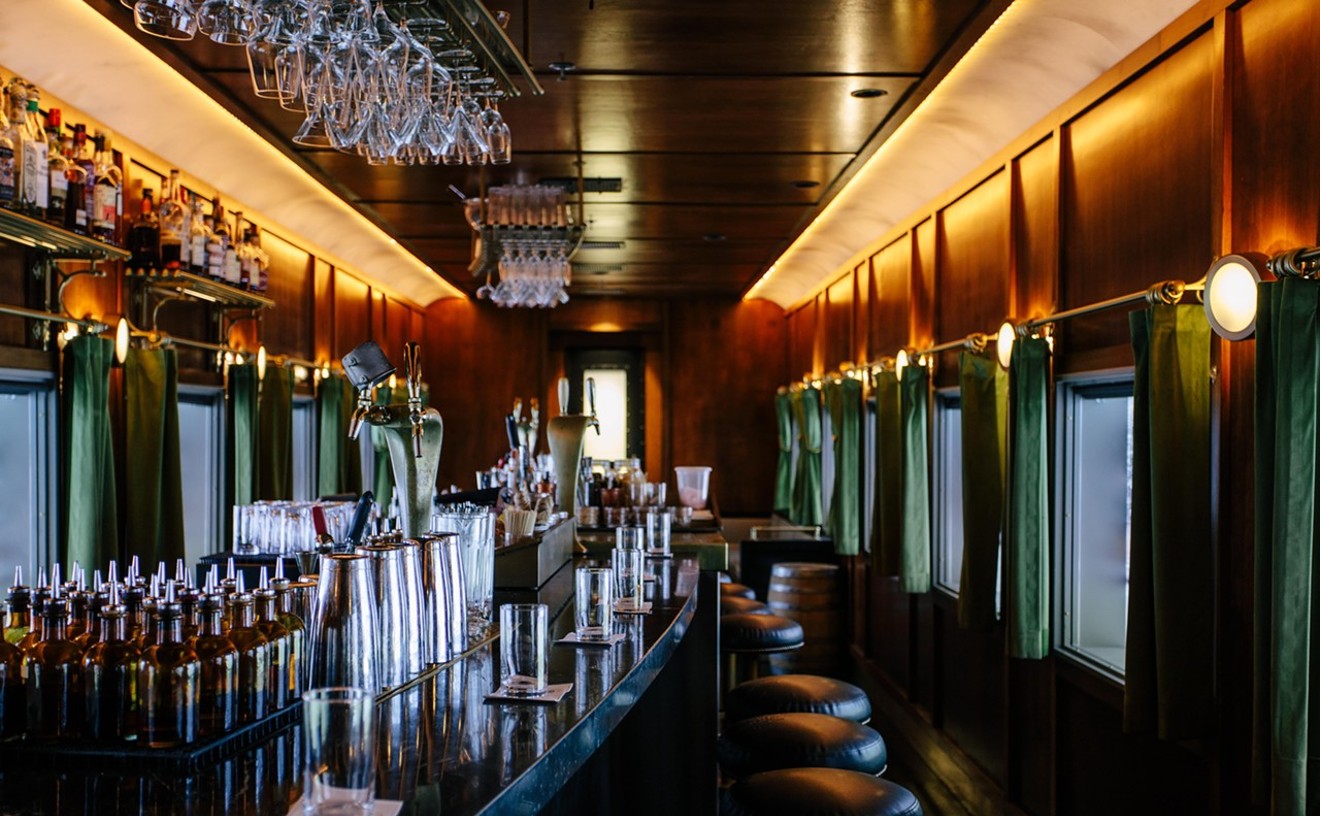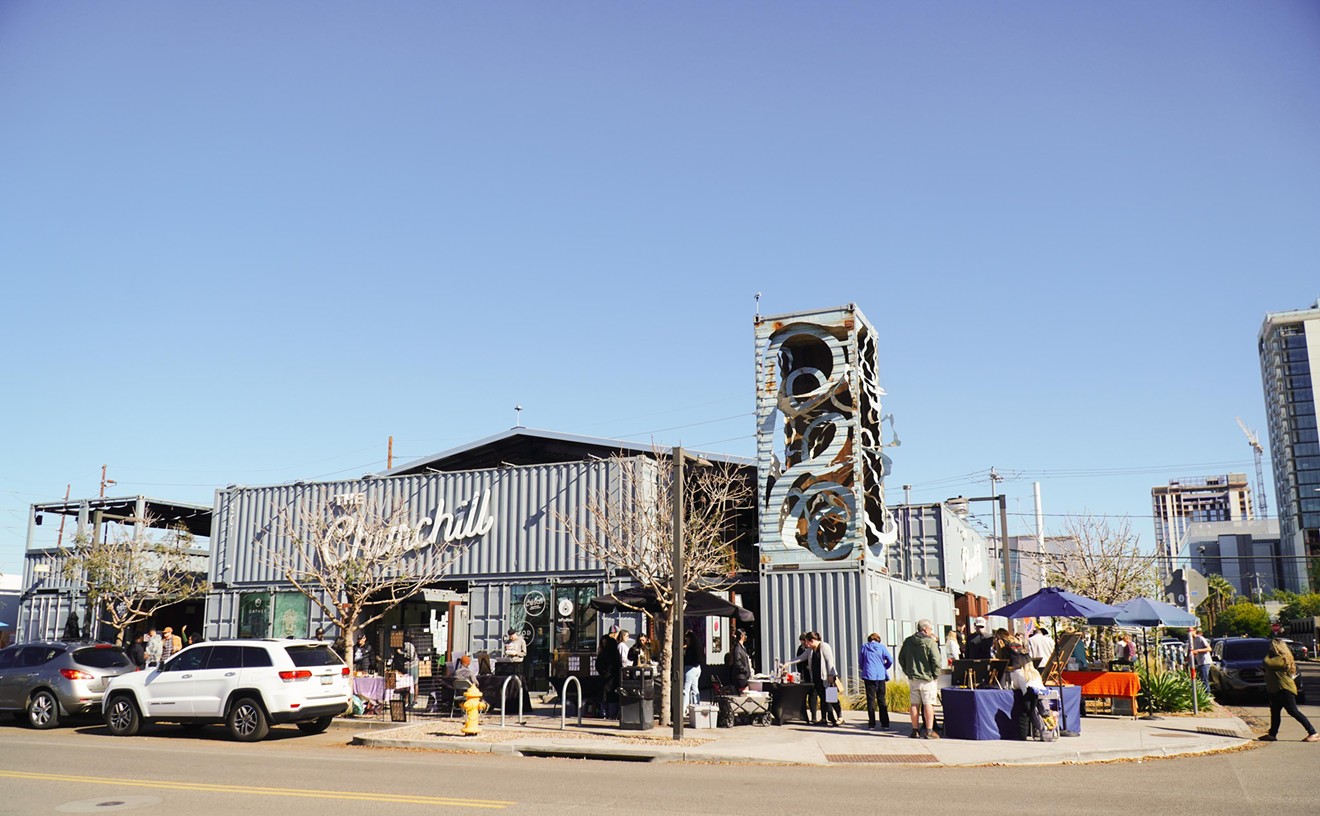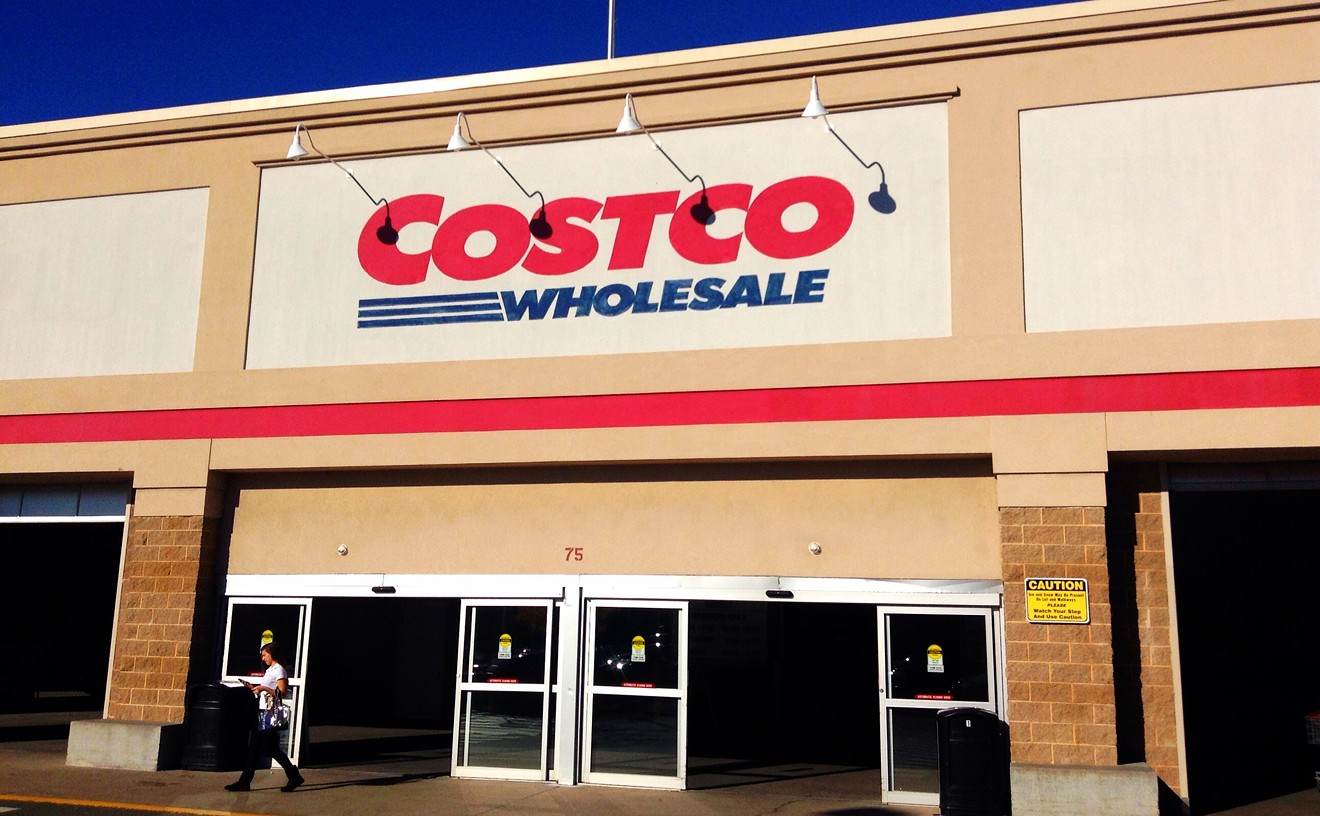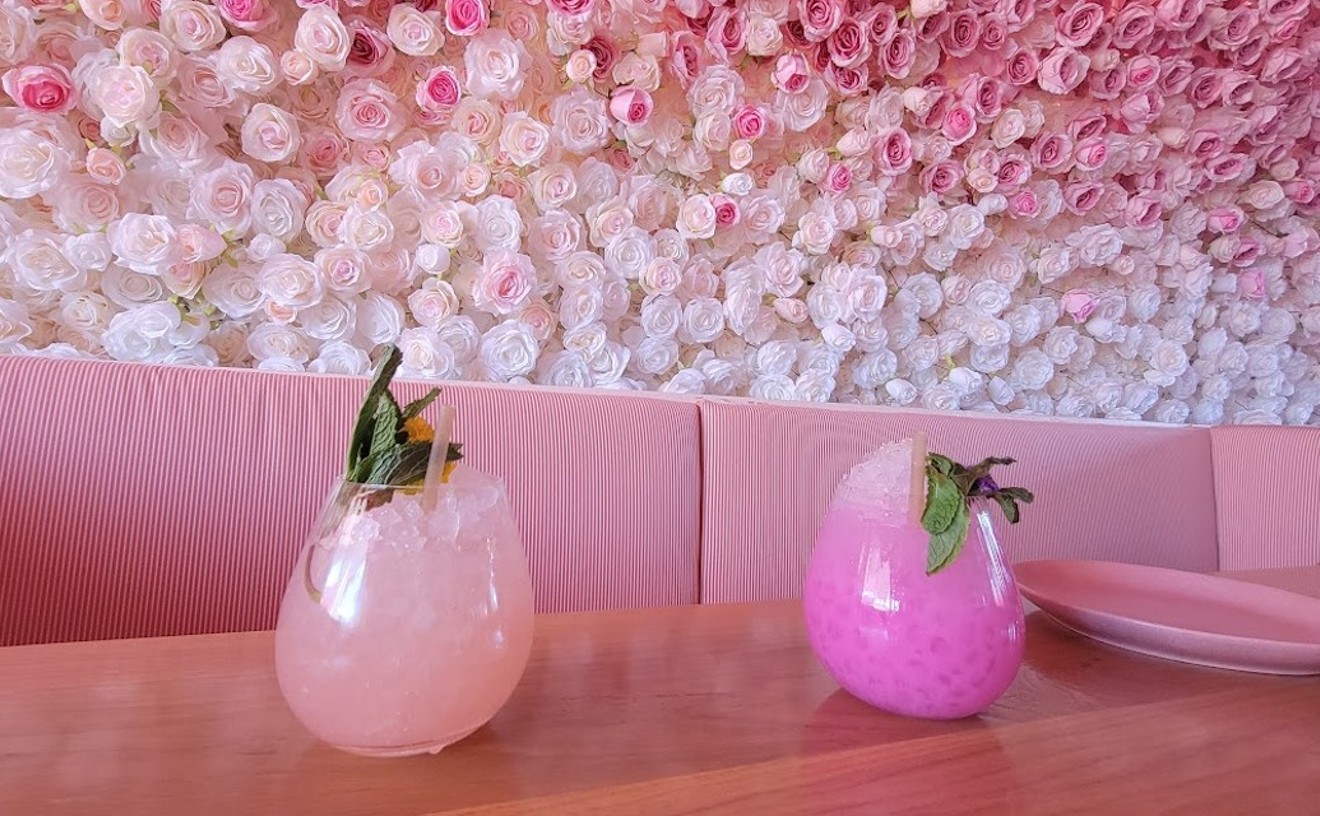Rob Samuels comes from a long line of whiskey-makers -- the Samuels clan has been distilling as far back as the 1500s in Scotland and was making whiskey in America before the country was founded. Bill Samuels Sr. (Rob's grandfather) began producing Maker's Mark in 1954, and Rob took over as chief operating officer of the distillery about a year ago (that's his signature on the side of every label). We met him for a weekday cocktail at Scottsdale's Culinary Dropout.
What brings you to Phoenix? Tonight we have an event here where we've invited 50, 60, maybe 80 consumers out to try some Maker's and some cocktails. We were actually the distillery in America to welcome visitors -- that was my grandmother's vision -- but we also like to take the distillery out to the people, and that's what this is about. For 25 years, Maker's was kind of a secret, and was really only well-known and celebrated in Kentucky. That was during the late 50s, 60s, 70s, even the early 80s. But since the early 80s, we've grown a little bit in some of the major cities like Phoenix and Scottsdale, so I can come out and do these kinds of things with consumers. It's one of the parts of my job that I love more than anything else.
Tell me about Maker's Mark. This is the bourbon brand that my grandparents invented. The Samuels family -- my ancestors -- has actually produced and distilled whiskey for almost 500 years. We made whiskey as far back as the early 1500s in Samuel, Scotland, then migrated to America in 1680, settled and started making whiskey in Pennsylvania. They then moved south and settled in what was then the western edge of Virginia, where my namesake, Robert Samuels, settled a land grant in 1784 in a part of Virginia that would later become Kentucky.
We owned a distillery called T. W. Samuels that was passed down for generations. That distillery was like all of the others that were open at the time. There were more than 100, and all those distilleries really made commodity whiskey -- test of manhood, blow your ears off. That was what the market was. My grandfather sold that old distillery, and after he sold it he opened a bank. It was the only bank in the history of America that opened and closed in less than 60 days. He later failed as an automotive dealer, and then my grandmother suggested that maybe it was time to get back into the whiskey business.
When he agreed, he said it was going to be on his own terms, which meant he wasn't going to do what his family had done in the past. He wasn't going to make a similar style of whiskey that the other distillers made. I think more than anything else, his vision was to approach the prospect as a craftsman, to try and bring good taste and bourbon together.
Why was the whiskey of the day so harsh? It came out of frontier America. Pushing westward on the trail, the cowboy would return home. It was a tough life, and the whiskeys of that era really reflected the harsh realities of daily life. Consumers anywhere in the world interested in good taste and refinement wouldn't even consider American whiskey. American cowboys would drink a rough whiskey to show their manhood.
So how did your grandfather approach making this new bourbon? My grandfather's vision for success, for him it was really about producing a whiskey that he'd be proud of. The way he thought about it was, he was going to break down each step of the whiskey-making process, and within each step he would attempt to bring together a more full-flavored, softer bourbon. That's why at our distillery, everything we do from the water we use to the grain we use, to how we grind the grain, cook it, distilling, aging, everything -- it was all intended to put those pieces together to deliver a hand-made bourbon with that refined taste profile.
My father, Bill Samuels, was president of Maker's Mark for 40 years, and his greatest achievement far and away is staying true to what we started with. The bourbon made today at Maker's Mark is made exactly the same way it was made in the beginning. Is it hard to stay true to that process? It's harder than it sounds. Manufacturers, as they grow especially, become more efficient, especially in terms of new technology. We've never embraced technology -- we still have the same roller mill we use to crush the grain that we started with. I've been to distilleries around the world that produced 10 to 20 times the capacity we produce, and we have far more employees. We have a 14-acre spring-fed lake at the distillery, and that's our sole water source. I believe we're the only distillery in America that gets its water from a natural source -- no city or county water.
There's a term -- small batch bourbon -- that's really a marketing term. There's no real rule for what makes a batch of bourbon "small." It means different things to different people in the business. Now, the average distillery in America produces 200 to 250 barrels of whiskey per batch. We produce Maker's Mark 19 barrels at a time, which is the smallest batch size of any distillery in the world.
How many bottles can you get from that? One barrel will produce about 110 bottles.
What makes Maker's different from other bourbons out today? Every bourbon has a minimum of 51 percent corn in the mash bill. What's unique about Maker's -- up until Maker's most every distillery utilized rye as the flavoring grain. Rye has spice, but it's also a little abrasive on the palate. My grandparents experimented with different flavoring grains, '
We're one of two distilleries in the world that uses a roller mill -- you have to grind the grain to get the starches out of it. Starches convert to sugar, sugar converts to alcohol. Most other distilleries use a hammer mill -- steel on steel, very, very fast. But with that speed you generate heat, and that heat scorches a little bit of the grain. The roller mill is slow, inefficient. We're also the only distillery in America that doesn't pressure-cook, and we distill at the lowest proof of any place in America to maintain taste. Bourbon, by law, can be distilled at 150 proof, but the higher proof you distill at, the more flavor and grain character you lose. So my grandfather elected to distill at a low proof.
Bourbon can be made anywhere in America. You can try to make bourbon in Phoenix, Hawaii or New York if you want to. Ninety six percent of bourbon is made in Kentucky, but that's not because it has to be. The biggest reason is the water source -- there's a limestone shell throughout central Kentucky, and that shelf delivers pure, soft, iron-free water. You can't have iron in your water and make good whiskey. You take any whiskey and drop a rusty nail in it, it'll turn black instantly. Corn is also our native grain, and bourbon by law has to be made with 51 percent corn. Oak is also native to Kentucky, so most barrels the whiskey is aged in are made right in the state.
But one of the biggest reasons is that we're far enough south that our summers are as intense as they would be in like a Birmingham or Atlanta, yet we're far enough north that our winters are almost as bad in Chicago. Those extremes between the seasons push the whiskey in and out of the barrel. One year of aging in Kentucky is equivalent to four years of aging in Scotland. So a five-year-old bourbon would be equivalent to an 8 to 22-year-old scotch.
We rotate our barrels throughout maturation. The aging warehouses are generally six stories tall, and heat rises, so the barrels at the top will get the most of it. We move our barrels at the tops to the middle after two summers, then from the middle to the first or second floor after two more summers. We're one of the few distilleries in the world that rotates barrels.
I can imagine why. They're probably a pain in the ass to move. We have about 25 people who, all they do all day is rotate barrels. We also leave about 25 percent of our warehouses empty at any given time, because when you move the barrel you have to have a place to put it.
My grandfather sold that old T. W. Samuels distillery when he was a young man, and he sold it for enough money that he could've moved to a nice place like this and played golf every day. But he risked everything. He put all his chips on the table to chase his dream.
The thing about all the whiskey of the day was, it was all bottom-shelf. He knew he would start with a unique recipe and a unique process, and then he would have to wait several years before he even had a product. He waited seven years for the first barrel to be ready. So the big question was, would it taste the way he wanted to after that long a wait? The other question was, even if it did, would consumers even give a damn? I learned my first week in business school that it's generally not a good idea to create anything without some consumer demand. So what happened? Keeneland, which is a thoroughbred racing track back in Lexington, purchased the first case, and it was that thoroughbred racing community in Lexington that first fell in love with Maker's Mark. I'm still proud of that, that in Kentucky, where 96 percent of bourbon is made, the brand the love more than anything else is Maker's Mark.
The bottle design is pretty unique. It was my grandmother who designed the bottle and came up with the name. I think in the back of my grandfather's mind, he had thought he was going to name his new bourbon after the family. She said, you can't name the bourbon after the family because consumers will associate it with the wretched T. W. Samuels whiskey that we had produced for a hundred years. He agreed and put her in charge of creating the name and designing the bottle. She had an extensive collection of English pewter, and she noticed that the craftsmen who made the pewter would always make a mark on them by hand. She suggested that my grandfather was also a craftsman, and that he should make his mark. So the name became Maker's Mark. In the mark, the S is for Samuels. He was a registered fourth-generation distiller of whiskey in Kentucky, so that's the IV. There were actually two additional generations that made whiskey illegally -- he didn't count them. The star is for Star Hill Farm, which is the original land grant farm that we settled on in 1780. It's now Samuels, Kentucky. Each of the three breaks in the circle represents the three instances in the history of America when it was illegal to produce spirits: the Civil War, World War I and Prohibition. She decided to spell whiskey with an "e" like the Irish whiskey and scotch distillers, as a tribute to the family having produced and distilled whiskey in Scotland. And since the beginning, every label on every bottle has been printed and torn by hand at the distillery. We had the same printing press up until like two years ago. When it broke down, we went and bought the same style of press from like the 50s, and we drove up to Chicago to buy it for $500. The wax was also my grandmother's idea. She said, "What better way to finish of the handmade process than by sealing every bottle by hand with red wax?" That way, each bottle is unique and a little different from the next, which is the mark of a handmade product.
Check back tomorrow for the rest of our interview with Samuels as well as Bill Samuels Jr.'s recipe for the perfect Mint Julep.









